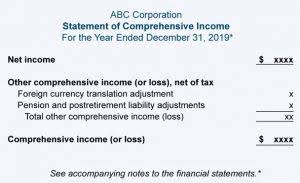
Instead, it is carried forward to the next period to reflect the cumulative total of the company’s retained earnings over time. However, once you debit the amount from dividends, that money still needs to be credited to the appropriate account. Credit the amount to the appropriate account and write a correction entry noting the reason for the adjustment on your balance sheet. Finally, restate your earnings statement to reflect the corrected retained earnings normal balance. When companies declare dividends, the amount is deducted from their retained earnings.
Statement of retained earnings
Understanding these differences is crucial for stakeholders to assess the financial strategies and performance of businesses within various structural frameworks. Retained earnings is a component of equity, which represents the ownership interest in the business. When retained earnings increases, it increases the equity side of the equation, which is a credit. Retained Earnings represents the company’s ability to generate profits and retain them within the business.

Advance Your Accounting and Bookkeeping Career
Retained Earnings is an important component of equity, which represents the ownership interest in the business. Retained Earnings increases equity, which increases the total value of the company. Retained Earnings is a component of equity, which represents the ownership interest in the business. Retained Earnings increases equity by increasing the company’s ownership stake. For example, during the period from September 2016 through September 2020, Apple Inc.’s (AAPL) stock price rose from around $28 to around $112 per share. During the same period, the total earnings per share (EPS) was $13.61, while the total dividend paid out by the company was $3.38 per share.
How to Decrease Retained Earnings With Debit or Credit
Observing it over a period of time (for assets = liabilities + equity example, over five years) only indicates the trend of how much money a company is adding to retained earnings. A maturing company may not have many options or high-return projects for which to use the surplus cash, and it may prefer handing out dividends. To simplify your retained earnings calculation, opt for user-friendly accounting software with comprehensive reporting capabilities. There are plenty of options out there, including QuickBooks, Xero, and FreshBooks. Retained earnings are also known as accumulated earnings, earned surplus, undistributed profits, or retained income.

Retained earnings is Bookkeeping for Chiropractors a credit because it represents the accumulation of profits that are reinvested in the business. When a company generates a profit, it increases its retained earnings account, which is a credit. This is because retained earnings is a source of funds that the company can use to finance its operations, investments, or other activities.

Hence retained earnings are the company’s past earnings that have been kept by the company instead of being distributed to shareholders as dividends. The higher the retained earnings of a company, the stronger sign of its financial health. Revenue, sometimes referred to as gross sales, affects retained earnings since any increases in revenue through sales and investments boost profits or net income. As a result of higher net income, more money is allocated to retained earnings after any money spent on debt reduction, business investment, or dividends. To conduct a thorough analysis, one must consider factors that contribute to the variance.
- As a result, additional paid-in capital is the amount of equity available to fund growth.
- A statement of retained earnings details the changes in a company’s retained earnings balance over a specific period, usually a year.
- Here, we shall discuss retained earnings, debit, and credit so that we can understand how the retained earnings are recorded and if they are debit or credit.
- Retained earnings are the portion of a company’s net income that management retains for internal operations instead of paying it to shareholders in the form of dividends.
Recording Changes in Balance Sheet Accounts

Net income increases Retained Earnings, while net losses and dividends decrease Retained Earnings in any given year. Thus, the balance in retained earnings is debit or credit Retained Earnings represents the corporation’s accumulated net income not distributed to stockholders. Retained earnings are the portion of a company’s net income that management retains for internal operations instead of paying it to shareholders in the form of dividends. In short, retained earnings are the cumulative total of earnings that have yet to be paid to shareholders. These funds are also held in reserve to reinvest back into the company through purchases of fixed assets or to pay down debt.
No comment yet, add your voice below!